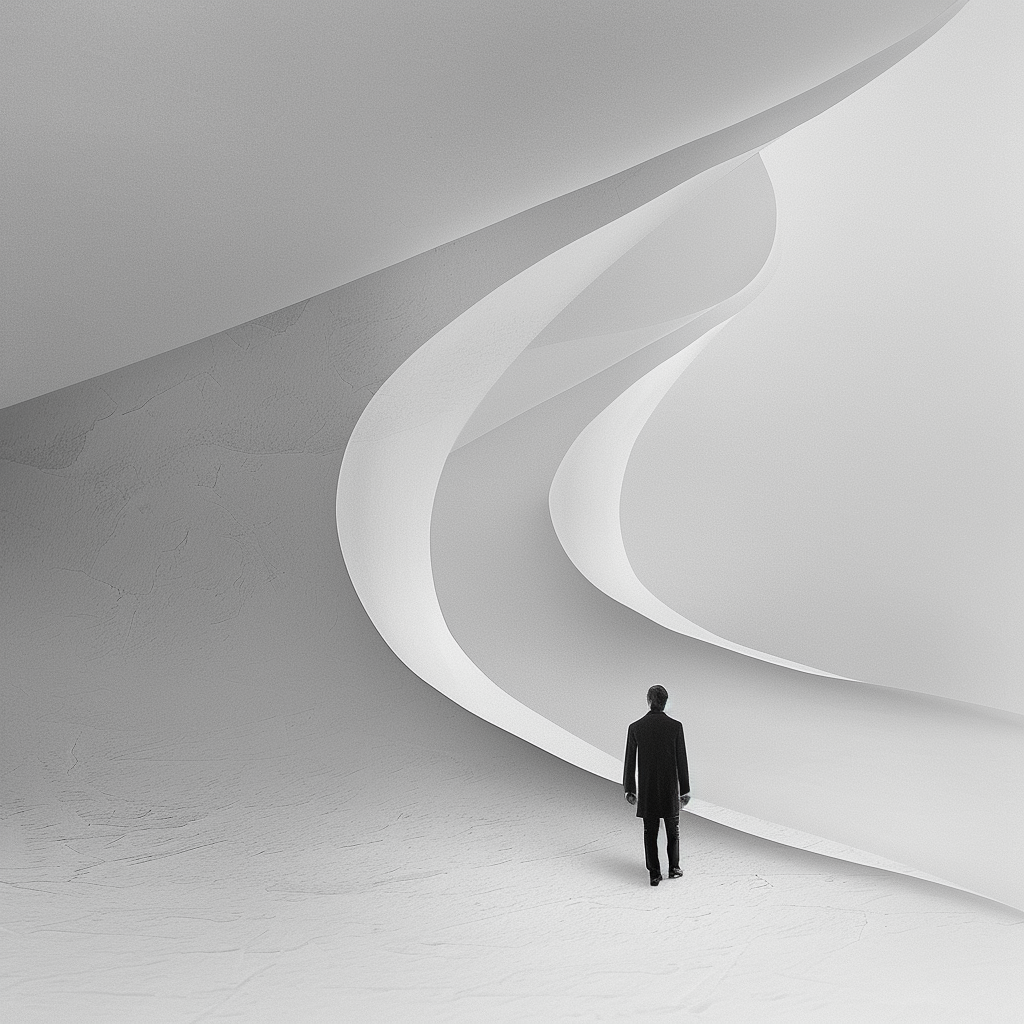





Paper Name: Nagaharu Fiber Paper
In contemporary papermaking exploration, Nagaharu Fiber Paper have developed a distinctive personality. They blend mulberry, goose skin, hemp, banana leaves, and coconut fibers, breaking through the size limitations of early handmade paper through improvements in traditional craftsmanship, thus extending to larger spaces.
Unlike for printing purposes, Fiber Paper are primarily used for interior decoration and artistic lighting fixtures. By controlling the appearance with fibers from different plant sources, determining the degree of translucency by tightly or intentionally loosening the base fibers, being easy to dye, and easily shaping after absorbing moderate moisture, these inherent physical characteristics of paper enable Fiber Paper to possess excellent qualities for spatial and lighting creation.
This type of Fiber paper serves as a bridge of light within space, where the blend of light and shadow creates a serene grayscale, engaging in a delicate and philosophical dialogue with the environment. It's not just a manifestation of materiality but a transformation of atmosphere, a contemplation on the flow of time, and the relationship between tradition and innovation.
more information: Nagaharu
-
中文紙張名稱:菲纖和紙
在當代造紙的探索中,菲纖和紙演化出了一種特別的個性。它結合了楮、雁皮、麻、芭蕉葉及椰子纖維,通過傳統工藝的改良,突破了早期手造紙尺寸的限制,進而能夠延伸至更大的空間。
有別於印刷相關用途,菲纖和紙主要用於室內裝潢以及藝術燈具使用,利用不同來源植物的纖維控制外觀、讓基底的纖維緊實或刻意鬆散來決定透光程度、易於染色、適度吸收水分後容易塑形等紙張本有的物理特徵,讓菲纖和紙擁有空間及燈具創作力的良好體質。
這種和紙,在空間內作為光線的橋樑,亮與暗揉合出的灰階交互著靜謐,與場域進行著細膩且哲思的對話。不單是一種物質的呈現,而是一種氣氛的轉化,一種對於時間流動,傳統與創新之間關係的深思。
-
現代の紙の探求において、和紙は特別な個性を持つように進化してきました。楮、雁皮、麻、バナナの葉、そしてココナッツの繊維を組み合わせ、伝統的な工芸の改良を通じて、初期の手漉き和紙のサイズの制限を打破し、より大きな空間にまで拡張されるようになりました。
印刷とは異なり、和紙は主に室内装飾やアートライトの使用に使用されます。異なる原料の繊維を使用して外観をコントロールし、基材の繊維を密にしたり、意図的に緩めて光の透過率を決定したり、染色しやすく、適度に水分を吸収した後に形を作りやすくするなど、紙固有の物理的特性を活かし、和紙は空間とライトの創作力を持つ良好な特性を持つようになりました。
この種の和紙は、空間内で光の橋として機能し、明と暗が交じり合ったグレースケールが静寂と共に空間内で語り合っています。これは、物質の表現だけでなく、雰囲気の変化であり、時間の流れ、伝統と革新の関係についての深い考察です。


